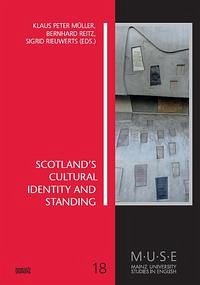Scotland's Cultural Identity and Standinggives insights into and provides an awareness of the enormous variety of Scottish identities and their cultural manifestations in (Scottish) history. This diversity is simply due to the fact that any such descriptions and definitions depend on the viewpoint from which they are made. A number of such mentalities that have characterized Scottish cultures are, therefore, mentioned – the Reformation, Whig conceptions of history, and various gender attitudes among them. Usually it has been the class in power that has determined the paradigms for the dominant and 'acceptable' concepts, but the arts in general and especially literature, as well as film – which are prominently dealt with in this book – have provided different, alternative, and subversive views, allowing all kinds of minorities to raise their voices and make themselves noticed. The topic dealt with is so vast that understandably only some typical examples can be delivered, but these are both fairly representative and then also subdivided into four groups that have always been relevant and have provided significant categories for the constructions of identities and standings in human history, namely a) translation and adaptation, b) the past, or history in general, c) literature, and d) genres, media and themes. The individual texts use very different approaches, address specific problems, and should be seen as part of the endeavour to reach a more comprehensive understanding of Scottish culture and history.
Bitte wählen Sie Ihr Anliegen aus.
Rechnungen
Retourenschein anfordern
Bestellstatus
Storno

